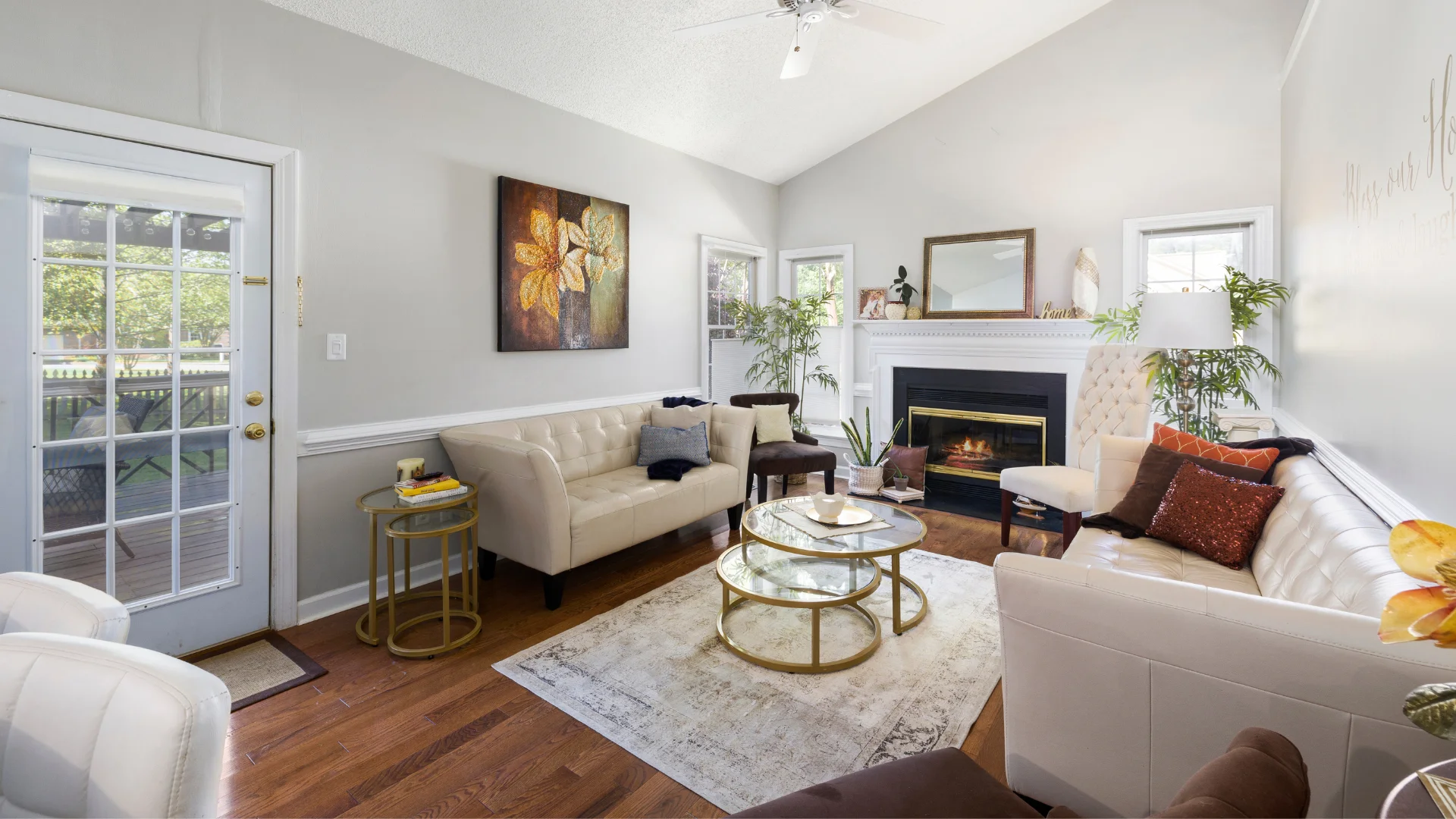In the world of interior design, creating a harmonious and visually appealing space requires careful consideration of various elements. However, even the most well-intentioned design endeavors can sometimes fall prey to common mistakes that detract from the overall aesthetic and functionality of a room. To help you steer clear of these pitfalls, let’s explore some of the most prevalent interior design mistakes and how to avoid them.
1. Ignoring Scale and Proportion
Scale and proportion are fundamental principles of interior design that are often overlooked. When selecting furniture and decor items for a room, it’s essential to consider their size in relation to the overall dimensions of the space. Oversized furniture can overwhelm a room and make it feel cramped, while undersized pieces may appear insignificant or out of place. To avoid this, start by measuring the dimensions of the room and creating a floor plan to determine the optimal layout. When choosing furniture, consider the height, width, and depth of each piece, ensuring that it complements the scale of the room and allows for comfortable circulation. By carefully considering scale and proportion, you can create a balanced and harmonious interior that feels cohesive and inviting.
2. Poor Lighting Choices
Lighting is a crucial element of interior design that can significantly impact the mood and functionality of a space. Unfortunately, many homeowners make the mistake of relying solely on overhead lighting or using harsh, fluorescent bulbs that create unflattering shadows and glare. To avoid this, it’s essential to incorporate a variety of lighting sources to create layers of illumination. Start by assessing the natural light available in the room and then supplementing it with ambient, task, and accent lighting as needed. Ambient lighting provides overall illumination and sets the tone for the room, while task lighting is focused on specific activities such as reading or cooking. By carefully planning your lighting scheme and selecting appropriate fixtures, you can enhance the beauty and functionality of your space while avoiding common lighting mistakes.
3. Cluttered Spaces
Clutter is the enemy of good design, yet it’s a common problem that many homeowners struggle to overcome. A cluttered space can feel chaotic and overwhelming, detracting from the overall aesthetic and functionality of the room. To avoid this, it’s essential to adopt a minimalist approach to decorating and prioritize quality over quantity. Start by decluttering your space and removing any unnecessary items that are taking up valuable real estate. Avoid overcrowding surfaces with too many knick-knacks or accessories, as this can make the room feel busy and cluttered. Instead, focus on creating clean, uncluttered surfaces that allow for easy circulation and visual flow. By embracing minimalist principles and prioritizing organization, you can create a serene and inviting environment that feels spacious and uncluttered.
4. Disregarding Functionality
Functionality is a critical consideration in interior design, yet it’s a common mistake to prioritize aesthetics over practicality. While it’s essential to create a visually appealing space, it’s equally important to ensure that it meets the needs and lifestyle of its occupants. To avoid this mistake, start by identifying the primary functions of the room and how it will be used on a daily basis. Consider the needs and preferences of the occupants, such as seating arrangements, storage requirements, and traffic flow patterns. When selecting furniture and decor items, opt for pieces that are both stylish and functional, ensuring that they serve a purpose and enhance the usability of the space. By prioritizing functionality in your design decisions, you can create a space that not only looks beautiful but also supports the lifestyle and activities of its inhabitants.
5. Neglecting the Power of Color
Color is a powerful tool in interior design that can dramatically impact the look and feel of a room. Unfortunately, many homeowners make the mistake of neglecting its importance or choosing the wrong color palette for their space. To avoid this, it’s essential to carefully consider the mood and atmosphere you want to create and select colors that support that vision. Start by exploring different color schemes and experimenting with shades, tones, and textures to find the perfect combination for your space. Consider the psychological effects of color and how different hues can evoke specific emotions and reactions. By carefully selecting and coordinating colors in your space, you can create a visually stunning interior that reflects your personal style and enhances the overall ambiance of your home.
6. Skipping the Planning Phase
One of the most significant mistakes in interior design is skipping the planning phase and diving straight into decorating without a clear vision or strategy. It’s essential to take the time to develop a comprehensive plan that outlines your goals, priorities, and budget for the project. Start by assessing your space and identifying any specific challenges or constraints you need to address. Consider the function of each room and how you envision using it on a daily basis. Create a mood board or design inspiration collage to help visualize your ideas and identify the elements you want to incorporate into your space. Consult with professionals such as interior designers, architects, or contractors to get expert advice and guidance on how to bring your vision to life. By taking the time to plan and prepare adequately, you can ensure a successful design outcome and create a space that meets your needs and exceeds your expectations.
7. Neglecting to Define a Focal Point
A focal point is a central element in a room that draws the eye and anchors the design scheme. Unfortunately, many homeowners make the mistake of neglecting to define a focal point or failing to highlight it effectively. Without a focal point, a room can feel disjointed or lacking in visual interest. To avoid this, it’s essential to identify a focal point and arrange the layout of the room around it to create balance and harmony. Common focal points include fireplaces, artwork, architectural features, or statement pieces of furniture. Once you’ve identified your focal point, arrange the furniture and decor items in the room to complement and highlight it. For example, position seating arrangements to face the focal point or use lighting to draw attention to it. By defining a focal point and arranging the layout of the room accordingly, you can create a cohesive and visually appealing interior that feels balanced and harmonious.
8. Poor Furniture Arrangement
Improper furniture arrangement can disrupt the flow and functionality of a room, resulting in a space that feels cramped or awkwardly proportioned. To avoid this mistake, it’s essential to consider the natural flow of movement within the space and arrange furniture in a way that facilitates comfortable circulation and interaction. Start by creating a floor plan and experimenting with different furniture layouts to find the optimal arrangement for your space. Consider the function of each area and how you envision using it on a daily basis. Arrange furniture to create conversation areas, define traffic flow patterns, and maximize usable space. Leave enough room between furniture pieces to allow for easy movement and circulation throughout the room. By carefully planning and arranging your furniture, you can create a functional and inviting interior that maximizes comfort and usability.
9. Overlooking the Importance of Texture
Texture is an often-overlooked element of interior design that can add depth, visual interest, and tactile appeal to a space. Unfortunately, many homeowners make the mistake of neglecting texture or failing to incorporate it effectively into their design scheme. To avoid this, it’s essential to consider the different textures available and how they can be used to enhance the look and feel of your space. Experiment with a variety of textures, such as smooth, rough, soft, and glossy, through textiles, furnishings, and decor accessories. By embracing texture and incorporating it thoughtfully into your design scheme, you can create a dynamic and inviting interior that engages the senses and adds depth to your space.
10. Ignoring Personal Style and Preferences
Perhaps one of the most significant mistakes in interior design is ignoring personal style and preferences in favor of following trends or imitating a particular aesthetic. Your home should be a reflection of your unique personality and tastes, not a carbon copy of a magazine spread. To avoid this mistake, it’s essential to take the time to explore your personal style and gather inspiration that resonates with you on a personal level.
By avoiding these common interior design mistakes and taking a thoughtful, strategic approach to your design projects, you can create spaces that are both visually stunning and highly functional. Remember to prioritize scale and proportion, embrace the power of lighting and color, declutter your space, and never compromise on functionality for the sake of style. With careful planning and attention to detail, you can transform your home into a beautiful and inviting sanctuary that reflects your unique personality and lifestyle.


